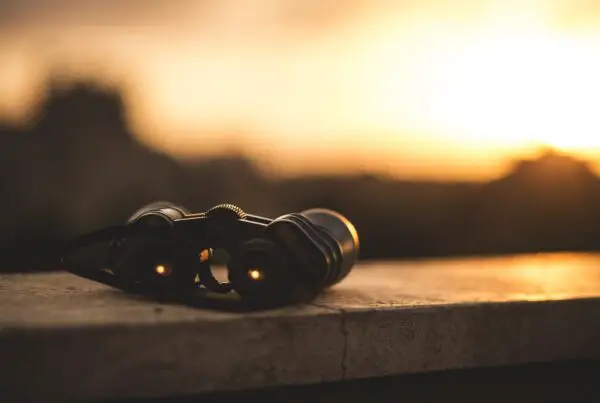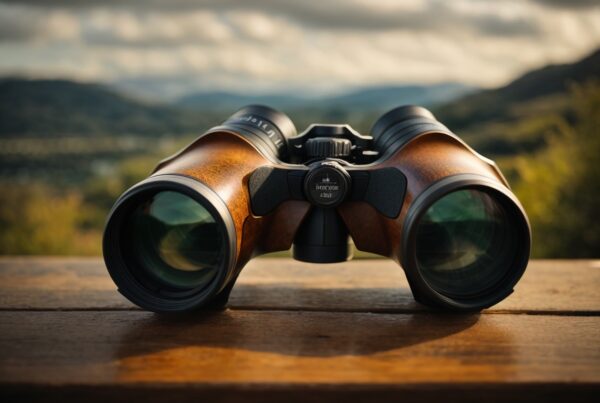Contents
The quality of the lenses in your binoculars is paramount for a sharp, clear view. Unfortunately, scratches on those lenses can be an inevitable part of using these optical devices.
Repairing scratched binocular lenses is not just possible, but often achievable. For minor surface scratches, try using a lens pen or a non-abrasive toothpaste method with caution. However, for deep or extensive damage, it’s best to consult a professional repair service.
Prevention through regular cleaning and proper storage remains your best defense against future scratches, ensuring clear and captivating views through your binoculars.
Assessing the Damage
The first step in determining if your scratched binocular lenses can be repaired is to assess the extent of the damage. Not all scratches are created equal, and understanding the severity of the issue is crucial.
Minor Surface Scratches: Begin by carefully examining the lenses under proper lighting conditions. Minor surface scratches, often barely visible, may not significantly affect your viewing experience. These can sometimes be overlooked, as they are less likely to impact image quality.
Deep or Extensive Scratches: On the other hand, deeper or more extensive scratches can be a cause for concern. These can obstruct your view and, in severe cases, render the binoculars nearly unusable.
DIY Methods for Minor Scratches

For those annoying minor surface scratches that can mar your viewing experience, there are some do-it-yourself (DIY) methods you can try:
Lens Pen or Brush: A lens pen or brush designed for optical cleaning can often effectively remove minor imperfections. Use gentle, circular motions to buff out scratches. These tools are readily available and easy to use.
The Toothpaste Method (Use with Caution): This method involves using a non-abrasive toothpaste on a soft cloth to gently rub the scratched area in a circular motion. Rinse and dry thoroughly afterward. However, exercise extreme caution with this method, as abrasive toothpaste can worsen the damage if not used correctly.
Commercial Lens Scratch Fillers: Several commercial products are specifically designed to fill in minor lens scratches and enhance optical clarity. Follow the manufacturer’s instructions carefully when using these products, as misuse can lead to adverse effects.
When to Seek Professional Help
For deep or extensive scratches or when DIY methods don’t yield satisfactory results, it’s time to consider professional help. Attempting to repair severe damage yourself can potentially worsen the problem or damage the delicate coatings on the lenses.
Reputable Repair Services: Look for reputable binocular repair services in your area or online. These professionals have the specialized tools and expertise needed to assess and address complex issues. They can often replace damaged lenses or repair them to like-new condition.
Manufacturer Assistance: If your binoculars are still under warranty, contact the manufacturer for guidance. They may provide repair services or recommend certified technicians who can help.
Prevention Is Key
While repairing scratched binocular lenses is possible in many cases, preventing scratches in the first place is the most effective strategy for maintaining optical clarity:
Use Lens Caps and Protective Cases: When your binoculars are not in use, keep them protected with lens caps and store them in a padded, protective case.
Handle with Care: Always handle your binoculars with clean hands, and avoid touching the lenses whenever possible. Use a lens-cleaning cloth to remove smudges.
Avoid Harsh Conditions: Refrain from exposing your binoculars to harsh conditions like blowing sand or excessive moisture, which can lead to scratches or other damage.
Cleaning and Maintenance
Prevention is always the best strategy when it comes to scratched binocular lenses. Proper cleaning and maintenance can go a long way in avoiding scratches in the first place.
Regular Cleaning: Develop a habit of cleaning your binoculars’ lenses regularly. Use a lens cleaning solution and a high-quality microfiber cloth designed for optics. Gently wipe away dirt, fingerprints, and smudges, taking care not to apply excessive pressure that could lead to additional damage.
Safe Cleaning Practices: Avoid using abrasive materials or harsh chemicals when cleaning your lenses. Always ensure your hands are clean before handling your binoculars, as grit or dirt on your fingers can exacerbate scratches during cleaning.
Frequently Asked Questions (FAQs)
Can I use regular eyeglass repair kits to fix scratched binocular lenses?
Eyeglass repair kits are not recommended for fixing scratched binocular lenses. Binocular lenses often have specialized coatings that require specific treatment. It’s safer to use lens-specific products or consult a professional for repairs.
How do I determine if a scratch is minor or severe?
Minor scratches are often barely visible and may not significantly affect your viewing experience. Severe scratches are deeper, more extensive, and can obstruct your view. Assess the scratch’s visibility and depth under proper lighting to determine its severity.
Can I repair deep scratches on my own using DIY methods?
Attempting to repair deep scratches on your own can be risky and may worsen the damage or harm lens coatings. It’s advisable to consult a professional repair service for deep or extensive scratches to ensure the best results.
What’s the best way to prevent scratches on binocular lenses?
Preventing scratches is crucial. Always use lens caps and a protective case when storing binoculars. Handle them with clean hands, avoid touching the lenses, and use a lens-cleaning cloth for smudges. These practices can help preserve optical clarity and prevent future scratches.
Conclusion
In conclusion, repairing scratched binocular lenses is indeed possible, but it hinges on the severity of the scratches and the overall condition of the lenses. Start by assessing the damage and try DIY methods for minor scratches. When in doubt or dealing with extensive damage, consult a professional for assistance. Remember, prevention through proper cleaning and handling practices is your best defense against lens scratches.

A Binoculars enthusiast, who love exploring skies and watching birds. It is my hobby to collect Binoculars of different kinds and try to explore the world through various lenses. This is all I do to explore happiness by magnifying my beautiful world.




